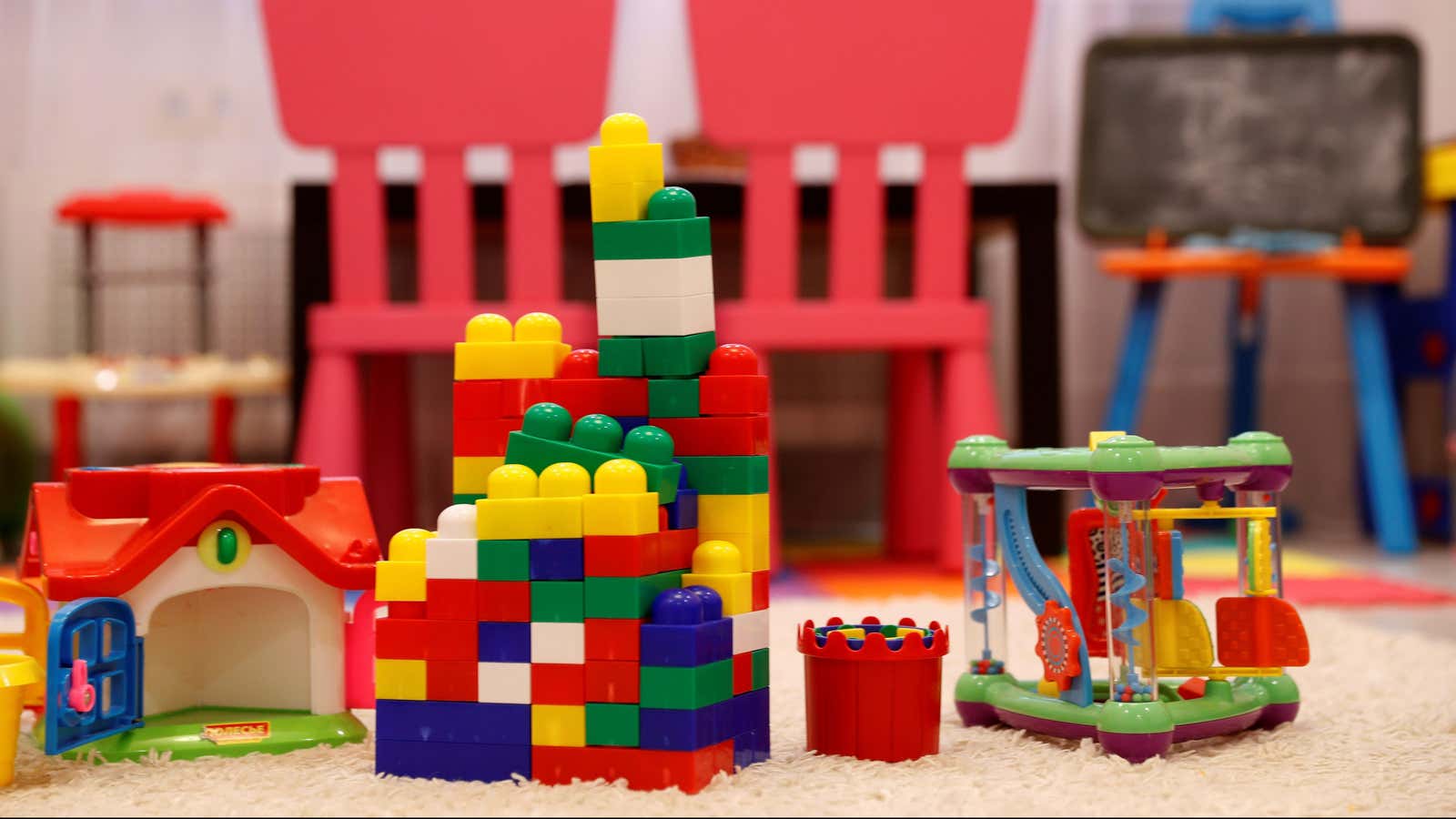As the holiday season approaches, many parents are deciding what kinds of toys to get their kids—and the American Academy of Pediatrics has some ideas. In recently-released guidelines, two scientists from the AAP’s Council on Early Childhood outline which types of toys can help children develop important emotional and cognitive skills, and which to avoid.
Research has shown that play is a crucial part of growing up, and that certain types of play can help kids develop language and cognitive skills; learn to regulate their emotions; become better at interacting with others; and even improve their relationship with caregivers.
As a result, the kinds of toys children play with matter a lot, especially during the crucial developmental period of zero to five years, when children’s brains form more than 1 million new neural connections every second. Some toys can help foster qualities like creativity, agency, and initiative, and learning skills. Other toys, however, especially those that are screen-based and replace physical play time, keep kids from moving around, increase their likelihood of obesity, and impact their fine motor skill development. And because so many screen-based games are single-player, they risk replacing “serve and return” interactions between parent and child, which are important for development.
As AAP researchers Aleeya Healey and Alan Mendelsohn write, toys are not just “children’s playthings.” They are “critical facilitators of early brain and child development.” They recommend that parents and caregivers consider getting kids these kinds of toys:
Symbolic or “pretend” toys
Toys that encourage kids to use their imagination and create a pretend-play scenario—like dolls, kitchenettes, and action figures—can help them develop language skills and socio-emotional learning as they craft and describe a story.
Toys you build or assemble
Traditional toys like puzzles or building blocks contribute to kids’ problem-solving, fine motor, language, and cognitive skills. These kinds of toys can also encourage “both spatial and early mathematics skills,” according to the AAP guidelines. “Roles and purposes are not defined for them, providing plenty of opportunities to use their imaginations in their play,” Healey says.
Language or concept games
Toys that encourage kids to play with words, such as card games that involve matching letters with images, can help grow kids’ cognitive, problem-solving, and language skills.
Physical activity toys
Teaching kids the joys of physical activity at a young age is good for their emotional and physical health, and can help develop healthy practices later in life. Group play with toys like footballs and hula hoops can also help children develop socio-emotional skills like self-regulation.
It might seem daunting to convince a four-year-old asking for an iPad that she’s better off with a puzzle. But in the long term, the AAP believes children will be happier assembling a puzzle with their loved ones, and learning along the way, than passively watching a screen alone. That’s why the best general advice the AAP gives parents is to look for toys “that match children’s developmental skills and abilities, and further encourage the development of new skills,” and to engage with their kids in playing with them. Those toys don’t have to be complicated or expensive—as Healey explains in a press release, “Simple, in this case, really is better.”
Read more from our series on Rewiring Childhood. This reporting is part of a series supported by a grant from the Bernard van Leer Foundation. The author’s views are not necessarily those of the Bernard van Leer Foundation.
